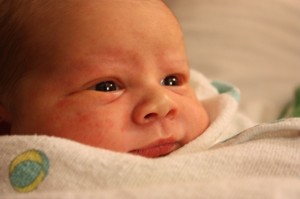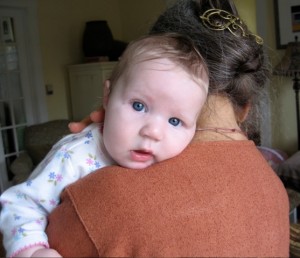I was asked to join a panel that would be presenting “Exploring the Critical Elements of Trauma Treatment” at the 6th National Conference of the United States Association of Body Psychotherapy in California, in October 2010. The other panelists were to be Robert Scaer, M.D., Peter Levine, Ph.D., Thomas Pope, M.A., Judith Blackstone, Ph.D., Scott Baum, Ph.D., and myself. Mary Giuffra, Ph.D. was to be the moderator. It was introduced in the catalogue to be a “lively discussion among leading trauma theorists and clinicians exploring unique perspectives on the incidence of trauma and its treatment.”
 Prior to the conference Mary sent we panelists an email with some questions. As soon as I saw “What are the essential elements of trauma treatment?” two words immediately came to my mind: Safety and Support. As I thought about being on this panel I realized what I wanted to talk about was preventing trauma, rather than treating it after it had happened. I would like to tell you what I offered for my participation on the panel.
Prior to the conference Mary sent we panelists an email with some questions. As soon as I saw “What are the essential elements of trauma treatment?” two words immediately came to my mind: Safety and Support. As I thought about being on this panel I realized what I wanted to talk about was preventing trauma, rather than treating it after it had happened. I would like to tell you what I offered for my participation on the panel.
As I thought so immediately, I feel that strongly that Safety and Support are two essential elements that are needed in any relationship for working with trauma (or with any growth issues for that matter). The trust of the practitioner is necessary. There must be an attunement between the parties. The method is not so important as is the resonance between them. The practitioner needs to pay infinite attention and pace the work to the client’s needs and abilities. Whatever happens must honor the client’s tempo and range. And I feel the only way to work with a person for depth and true change of any sort must be somatic. Our experiences really are in our cells. Somatic awareness is the crucial element to lead our work.
I divided my talk into several sections: during gestation, the birth process, after birth, and even before.
Conception is also an important stage during which traumas can occur, even though I didn’t concentrate on it. How conception occurs can be a basis for traumatic beginnings or for secure consciousness. The consciousness of the parents and their awareness affects the process of conception and the consciousness of the prenate which continues into birth and later life.
During Gestation:
The attitude of the family is very important and is passed on to the prenate. Of course the attitude of the mother especially influences the baby, but the father’s attitude is also deeply felt, and that of grandparents, siblings, etc.
Many years ago when I first began working with infants two other colleagues and I would see clients together, for support and for learning. One day a lovely young family came in. There was nothing wrong with the infant, no traumas, they had had a lovely birth; they just wanted to check in with us to see what we could say. The mother sat in a rocking chair with the baby sleeping in her lap as the parents talked softly about their experiences. It was a lovely scene. The mother mentioned how her parents thought it wasn’t wise for them to have a child at that time and they wanted her to have an abortion. From his sleep the child startled! His arms rose above his head and his entire body tensed. After she told us that she had not wanted to do that we coached her to immediately tell that to the baby. The parents told him they wanted him very much and they were so glad he was here. (She told us she only had considered abortion for a minute.) As they told their child how much they loved him, he settled and went back to sleeping peacefully without actually having wakened at all. But he heard, somewhere he knew. And it was important for that unspoken confusion to be clarified.
The attitude about pregnancy is very important. Unwanted pregnancies, even an inconvenient pregnancy makes a big difference and the child feels it deeply.
Various events in the parents’ lives during the pregnancy can make an impact on the prenate. Physical traumas and emotional traumas are passed down through the lineage.
Research shows that when mothers have difficult births their daughters also have difficult births at higher than normal rates. This is definitely information that supports how valuable it is for mothers to work with and resolve their traumas as much as possible before giving birth. Fathers’ traumas can also affect the child – less so, but they are still important influences.
There is also what we call “generational trauma.” This is the history the parents bring to pregnancy and birth as well as the quality of their relationship. It is personal events and also huge, historical ones, such as holocausts, wars, deprivation, etc.
And there are also not-so-minor issues such as alcohol (now-a-days, thankfully, most people do pay some attention to the fetal alcohol syndrome), smoking — both first-hand and second-hand smoke affects the prenate. Sounds also affect the prenate as do other actions. Abuse to the mother goes all the way in to the prenate. Tension, depression, fear, stress — all these activities, everything, whatever it is, has a part in creating the environment in which the prenate lives.
During the Birthing Process:
There are many possibilities for interventions during the birthing process. Some are necessary; others may not be so. Planned or unplanned drugs of course affect the baby who is working to be born. Unconsidered and unaddressed fear is especially an important element in the whole equation of the birth. If the mother becomes tense it affects the labor process even to the point of stopping it.
For ease and to feel safe the mother must know what is happening and feel she has some control and support -at least some connection to what is happening. How the medical staff treats the mother is very crucial. If she is not considered or heard by the medical staff, if she is talked about, as an object, rather than spoken TO as the birthing mother she can feel disfranchised and this greatly affects her power and ability to do what she instinctively knows she must do and what is best for her and her baby. Support, an advocate for the birthing mother is very important.
There are also physical aspects of trauma and damage: tears in the mother’s tissue, the baby stuck in the birth canal, such difficult situations as shoulder dystocia, broken collar bones, pelvis, brachial plexus injuries, etc. These all create difficulties and injuries for the mother and probably terror as well as great pain for the infant.
I saw an adult client who had been born with multiple fractures. His pelvis, ribs and clavicle had been broken during his birth. He had no memories of his injuries but he always felt he was broken. He lived his life as if he could throw it away. He was very reckless. It took a lot of sensing, of somatic awareness practice to get to the point where he felt he was worth something and his life worth living.
Sometimes the birth is too fast. This is usually due to drugs. I’ve worked with many clients who had their heels dug in and resisted finishing anything within a time line. Their feeling was that they had been pushed once and they didn’t want to be pushed again. They wanted to have control over the timing in their lives.
And there are the very different situations of the emergency cesarean sections and the planned cesarean sections. The former is an essential, probably life saving situation; the latter is often for no good reason. In both cases the neonate is usually pulled out without any warning. The emergency c-section gives the baby the message “I am not good enough to finish the job I started.” With the planned c-section the traumatic message is more “No one cares about my timing, my needs.”
Either case is traumatic for at least the neonate.
The c-section rate in the United States is tragically high. Some say it is now 38-40%. In countries with more non-medical resources like midwives the rate has been a steady 5% for a long time.
Vacuum extraction is a terribly traumatic manner to try to assist the birthing of a baby. I have felt the power and pain of a vacuum extractor on my palm, which is not very sensitive, compared to the soft, delicate skull of a newborn baby. It was very intensely painful.
Forceps are also another device that have been used, perhaps more in the past, to help facilitate the baby birthing. And again it is the skill and the manner in which it is used which makes all the difference.
These may be necessary procedures. HOW they are performed and how it is presented to the birthing mother and baby is crucially important and makes a huge difference in whether the situation is going to be difficult or horribly traumatic.
After the Birthing Process:
Separation of mother and baby is a common practice in the west. This is truly abuse and traumatic to both parties. After such an intense process as birthing, mother and infant need and deserve the time to rest and be with each other.
Adoption is a severe trauma, of course, but “just” the simple separation of mother and baby is traumatic as well.
Transition from a warm, soft womb to a cold, bright (for the convenience of the medical staff) room and then put in a plastic container is quite a shock.
Picking up the neonate quickly, roughly toweling off the natural vernix from the baby’s skin, measuring and weighing the baby, suctioning (unless it is necessary), heel sticks, putting chemical drops in the infant’s eyes – all these activities are traumatic and terrifying to the baby. I think most doctors have given up the very common practice of hanging the neonate from its feet and slapping it on the buttocks to get it to cry, but perhaps I am too hopeful. Almost none of these procedures are immediately necessary. If all is well and there are no medical emergencies these procedures definitely can be done in good time in a much kinder and less traumatic manner.
Another traumatic occurrence is circumcision.
If the infant needs, for various unfortunate reasons, to be in the NICU this can be terribly traumatic. An infection in the mother that might cause separation and not allow nursing to occur is also an unhappy situation. Any terrifying situations such as these can be mitigated if the baby is also talked to as a person who is here and is important rather than being talked about as an object.
Trauma during the perinatal period can affect the parents’ perception of the baby, their own self-concept, and their relationships. These traumas can impair bonding and attachment and affect relationships in the entire family. They can continue to create multiple problems for mother and baby that can grow and entangle into myriad traumas for life long situations.
Early trauma can have both immediate and long-range affects on the parents and the infant, and later in the adult it may create and connect with other psychological and somatic conditions and form a negative self-concept on levels difficult to work with because it all happened so early and so one-sidedly, and of course most of it was PRE-VERBAL. Basically no one remembers that it happened as a traumatic wound, but we carry it in our muscles, in our cells, and consequently only somatic work will allow the person to access these situations.
Awarenesses to Help Prevent These Traumas:
Treat the baby, pre-birth or post, as the person that s/he is.
TALK TO THE BABY -both during pregnancy and around the birthing process, and of course after birth.
While pregnant if the mother is upset or angry or something difficult or traumatic is happening she can tell the baby what is happening if it is appropriate, but most especially she can let the baby know that it is not her/his fault, that s/he doesn’t have to be involved. She can say, “I’m upset and it has nothing to do with you.” “I’m angry and it is not about you.” Etc.
During the birth process let the prenate know what is going on: I’m scared/ we’re going to make a change/ we’re going to do it differently. The doctor is going to help you come out. I’m going to sleep -I’m still here with you even if I don’t talk to you for a while -I’m here with you even if you can’t feel me.
I love you so much and I want you to come out so I can see you. I’m so glad you are coming now. We are stuck and we’re going to get some help. It is long and hard work and I know it is worth it. We love you very much. Etc.
After Birth:
WELCOME THE BABY!!!
Speak it! Let him/her know s/he is wanted and that the journey was worth it.
Make eye contact when the baby is available for it.
Touch the baby, stroke, cuddle.
SKIN-TO-SKIN CONTACT. Not just mommy; daddy too.
Breast feeding (even bottle feeding) also needs to include eye contact and touch and speaking, etc.
Sounds and words and coos.
Meet the baby’s tempo – which probably most of the time means slow down.
Communicate with sounds, movements, touch – all APPROPRIATE to the baby’s world and timing and needs of the moment.
CONTACT OF ALL SORTS: mental, physical, emotional, spiritual.
And continue this throughout a young one’s life, Ideally throughout all our lives.
I ended my offering on the panel by speaking to the audience who were mostly somatic psychologists, body-oriented psychotherapists, and students in the field:
 You sensitive somatic therapists would probably not touch a client without asking permission or at the least letting them know that you are going to touch. How many people ask a baby or tell them that they are going to touch them or pick them up?
You sensitive somatic therapists would probably not touch a client without asking permission or at the least letting them know that you are going to touch. How many people ask a baby or tell them that they are going to touch them or pick them up?
Most adults pick up an infant without warning and much too quickly for the baby’s system. The babies startle. They become rigid. Their regulatory systems are assaulted. A trauma pattern is begun.
Tell the baby. Let him/her know what is happening. Let him/her know that you think s/he is important enough to be included and spoken to.
Pulling a shirt over the head of a young one: how often does it get stuck? The baby may feel s/he cannot breathe. This promotes panic. It could be a beginning of breathing disorders. Just giving notice of what you are going to do before or as you begin can mitigate the potential traumatic elements in a situation such as this.
Trauma is overwhelming -it is something we can’t handle.
Meeting infants as they are, at their levels of needs and potentials, helps them learn how they can handle what is happening. Interacting appropriately, meeting them where they are, can prevent adding new stresses and traumas onto a little life. This will consequently give us fewer traumas to unravel and will add more safety and security for our later lives.
Please let us do what we can to PREVENT traumas in little ones and therefore lessen traumatic situations in our world.
Thank you.
 Judyth O. Weaver is a multifaceted teacher and counselor, incorporating extensive training in diverse areas. She holds a Ph.D. in Reichian Psychology.
Judyth O. Weaver is a multifaceted teacher and counselor, incorporating extensive training in diverse areas. She holds a Ph.D. in Reichian Psychology.